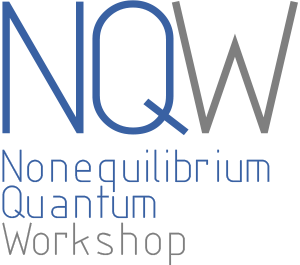- Invited talk
Andrew George Green: Phase Transitions in the Classical Simulability of Open Quantum Systems
We introduce a Langevin unravelling of the density matrix evolution of an open quantum system over matrix product states, which we term the time-dependent variational principle-Langevin equation. This allows the study of entanglement dynamics as a function of both temperature and coupling to the environment. As the strength of coupling to and temperature of the environment is increased, we find a transition where the entanglement of the individual trajectories saturates, permitting a classica...


